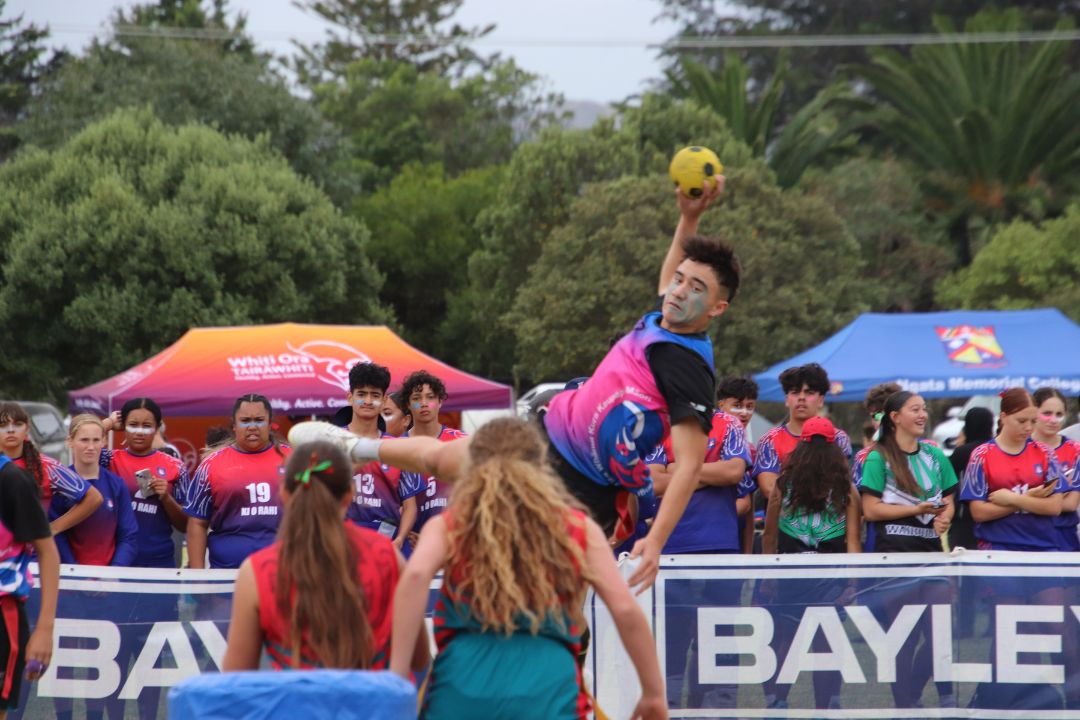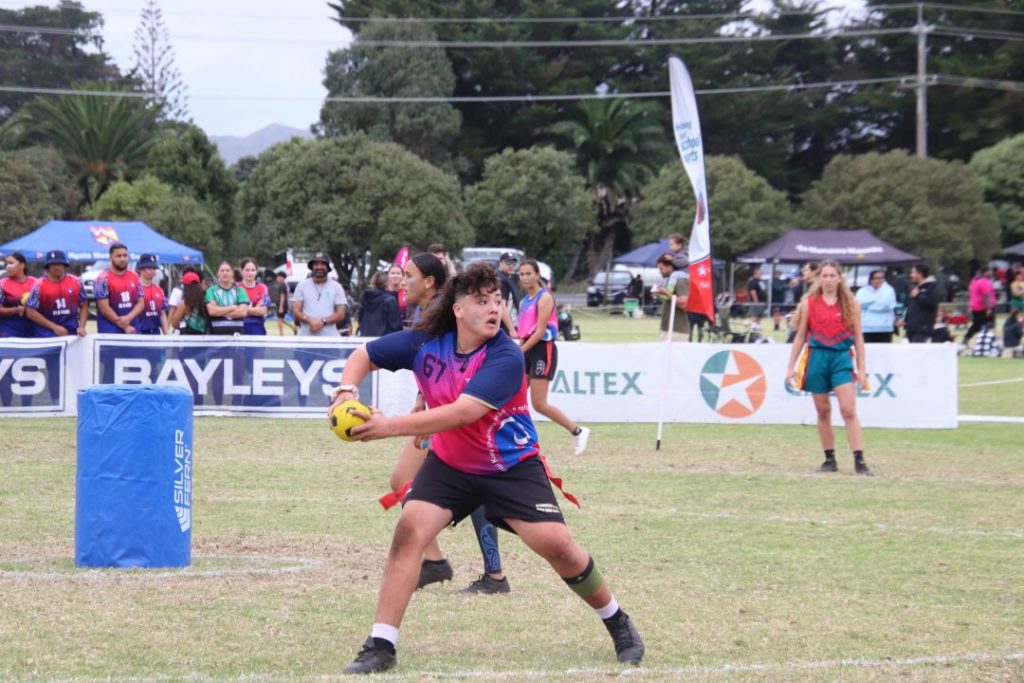
21 Jun Taonga Tākaro: Revitalising Culture and Identity through Kī O Rahi
In recent years, the resurgence of Kī-o-Rahi has become a symbol of cultural revitalisation and the preservation of mātauranga Māori. Grounded in pūrākau, this traditional kēmu is a living, breathing embodiment of our cultural narratives.
Our Kaimahi, Crystal Pekepo-Ratu, recently spent some time with John Kingi and his crew from Rangatahi Tū Rangatira and the local secondary school Kī-o-Rahi team from Te Ara Whānaui Kura Kaupapa Māori o ngā Kōhanga Reo o Te Awakairangi in their lead up to the Kī-o-Rahi Secondary Nationals in Tūranga Nui a Kiwa. A passionate supporter and advocate of Kī-o-Rahi, John shared some of his insights with Crystal.
Rohe Centric Perspectives: Exploring Regional Expressions of Kī-O-Rahi
The expressions and practices of Kī-o-Rahi vary across different rohe, each bringing its unique kawa and tikanga to the field. For instance, the way Kī-o-Rahi is played in Te Whanganui a Tara uses different tikanga or rules compared to kēmu played in Te Waipounamu. These differences highlight the importance of recognising and honouring the local traditions and knowledge that shape the kēmu.
Beyond Competition: Kī-O-Rahi as Cultural Expression and Identity
While it is easy to view Kī-o-Rahi as just a competitive sport, its significance runs much deeper. Kī-o-Rahi is a taonga tākaro – a treasured kēmu that serves as a medium for storytelling, teaching values, and connecting individuals to their whakapapa and whenua. By shifting our perspective from seeing it solely as competition, to appreciating it as a holistic cultural practice, we can better understand its role in fostering community, teaching life lessons, and strengthening cultural ties.

Obligation and Responsibility: Honouring the Mātauranga within Kī-O-Rahi
Those who deliver and teach Kī-o-Rahi carry a significant obligation and responsibility. They are not just coaches or instructors; they are the guardians of mātauranga Māori. It is their duty to honour and maintain the knowledge, values, and stories that Kī-o-Rahi encapsulates. This requires a respectful and mindful approach.
Metaphorical Thinking: Lessons from Kī-o-Rahi on and off the Field
Kī-o-Rahi is rich with metaphorical lessons that extend beyond the field. The pūrākau associated with the game often reflect human emotions, conflicts, and resolutions, offering valuable insights for those who play. Through the lens of pūrākau, Kī-o-Rahi provides an avenue for the younger generation to connect with their heritage, understand the values and lessons passed down through generations.
One example is the concept of Tatau Pounamu—a symbol of peace and unity— which can inspire players to think about harmony and balance in their own lives. When engaging with these metaphors, players draw upon the wisdom of the game to inform their actions and decisions both on and off the field. It can invite reflection on how we can honour our mātauaranga and apply these lessons in our daily lives.
As we engage with Kī-o-Rahi and other taonga tākaro, it is important to consider what these games mean to us from a te Ao Māori perspective. How do we honour mātauranga within our own rohe? How do we ensure that our unique traditions and practices are respected and perpetuated? By reflecting on these questions, we can strengthen our commitment to preserving our cultural heritage through taonga tākaro.
Coming Up
Keep an eye out on our video series release during Matariki…

Crystal Pekepo-Ratu
Crystal Pekepo-Ratu (Ngāti Kahungunu, Ngāti Vara) is the Kaiārahi- Design, innovation, research lead for Toi Tangata.



